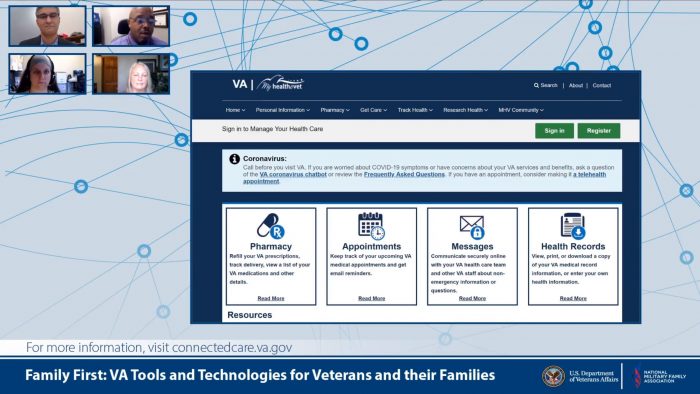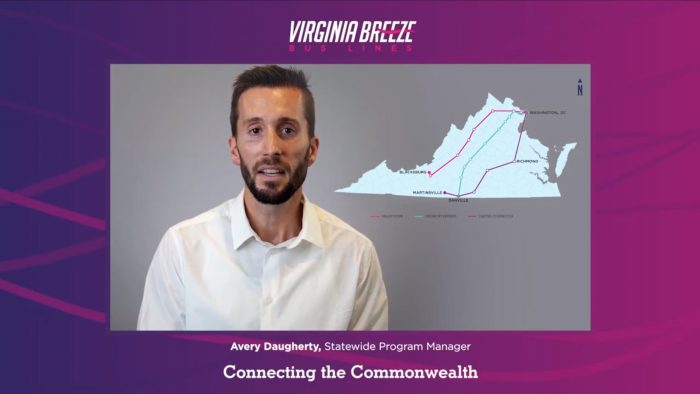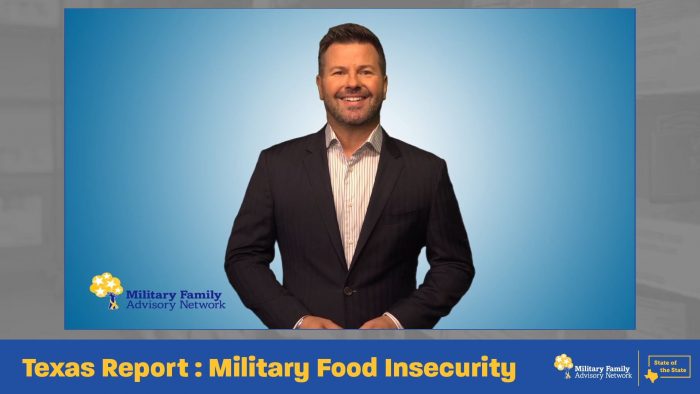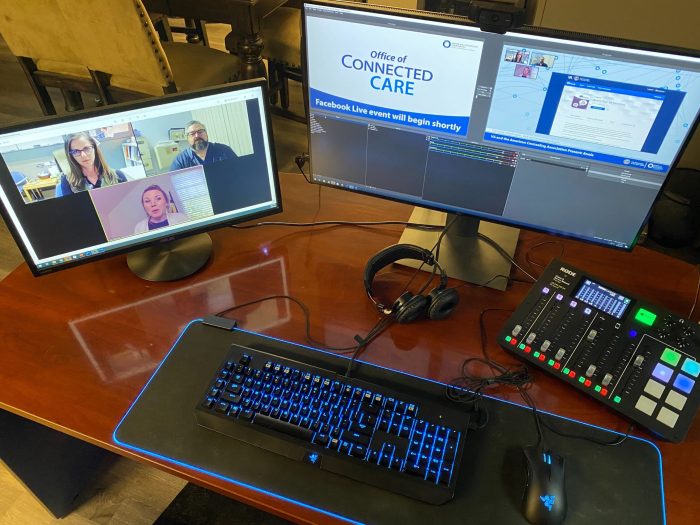A Journalist’s Approach To Producing Virtual Events
Feb 17, 2021
Posted by Daniel Shedd
As a leader on Reingold’s Public Relations team, I know this: The overnight transformation to remote work nearly a year ago did more than replace conference room gatherings with Zoom meetings and introduce cameo appearances by four-legged friends. It meant that the large presentations and media events Reingold helps our clients execute needed to shift, and fast, to a digital format.
Many of us on the PR team, including me, poured a full pot of coffee most mornings back then as we logged on to assist government and nonprofit clients in adapting to this new normal. My desk nowadays resembles a small television studio. The equipment that we use to support clients’ virtual events is fitting for me — a former TV news anchor and on-camera reporter — but not something I would have imagined a year ago. While the coffee intake has held steady, the number of our accomplishments on behalf of our clients has shot up.
How did we do it?
Following are three examples of Reingold’s approach to making sure the show goes on for clients, keeping everyone safe in the process.
Livestreamed Events: Pumping Up Production Quality
Client: U.S. Department of Veterans Affairs
Meetings: Facebook Live events to promote telehealth services
The U.S. Department of Veterans Affairs (VA) was the first to take on the new livestream capabilities — no surprise, since VA is also an innovator in offering telehealth solutions. VA sought to talk directly with Veterans during the COVID-19 pandemic to tell them how to access digital care services, refill their prescriptions online, and more.
A recent VA Facebook Live event featured numerous promotional videos and brought together multiple experts from across the country — previously, one of the biggest challenges for such an event. Just like inserting a replay into a live sports game, we were able to match the presenters’ conversation with the images on the screen. We created a custom graphics package that enabled us to show several videos simultaneously (think “picture in picture”) and to move them around the screen.
 It felt great to escape the confines of the default layouts of Zoom or Skype. And for the first time in a remote environment, I didn’t have to ask participants, “Can you see my screen?”
It felt great to escape the confines of the default layouts of Zoom or Skype. And for the first time in a remote environment, I didn’t have to ask participants, “Can you see my screen?”
Media Training: Delivering a Message
Client: Virginia Department of Rail and Public Transportation
Meeting: Media training for leaders to introduce new routes
Media training has been a long-time staple of the Reingold Public Relations team. It’s an offering that remains essential during this pandemic, when both trainers and spokespeople are typically remote.
Last August, the Virginia Department of Rail and Public Transportation wanted to unveil two new routes, which used to mean a live, in-person media event. Our virtual team hit the ground running. We developed talking points for their leadership team and guided them in delivering these key messages in the most effective (physically distanced) way possible. We then recorded their remarks, compiled them with custom graphics, and aired the video as an online news release event.
 The virtual event not only showcased the client’s new look and unveiled a new marketing video, but also allowed spokespeople to connect directly with communities throughout the state, answering questions in real time.
The virtual event not only showcased the client’s new look and unveiled a new marketing video, but also allowed spokespeople to connect directly with communities throughout the state, answering questions in real time.
Considering the circumstances, we could have just issued a news release, distributed it to reporters across Virginia, uploaded the video to the client’s website, and called it a day. But we opted to replicate the kind of compelling, responsive communication that we’d deliver in any year other than 2020.
News Conference: Giving Everyone a Voice
Client: Military Family Advisory Network
Meeting: Virtual launch for its State of the State: Texas report on military family hunger
It was an uphill battle for every PR team to navigate the 2020 news cycle devoted to COVID-19, the presidential election, and racial injustice.
But we found a way to capitalize on the fact that people had to stay home. A captive audience that’s increasingly using social media means a larger audience for important stories — if they’re skillfully told on platforms like Facebook, Twitter, YouTube, LinkedIn, and Instagram.
That was our approach for releasing the Military Family Advisory Network’s report, “State of the State: Texas,” which sheds a light on food insecurity among military families in the Lone Star State. The event was streamed on Facebook Live in November and also recorded so that we could embed it on MFAN’s website and splice it into bite-sized pieces for other social media platforms.
 Our biggest win for this event was enlisting the emcee: Ron Corning, a popular news anchor in Dallas. Ron’s presence turned the event into a sophisticated, fact-filled presentation. He prerecorded his sections for the event, and we sandwiched those videos between discussions about the data, television PSAs, Q&A segments, calls to action, and responses from partnering organizations.
Our biggest win for this event was enlisting the emcee: Ron Corning, a popular news anchor in Dallas. Ron’s presence turned the event into a sophisticated, fact-filled presentation. He prerecorded his sections for the event, and we sandwiched those videos between discussions about the data, television PSAs, Q&A segments, calls to action, and responses from partnering organizations.
We sent news releases and email pitches about the event to reporters statewide, including a link to the online event that has had nearly 2,000 views, dozens of comments, likes, and shares, and sparked more questions from reporters.
The Setup: A Peek Behind the Curtain
My desk-turned-TV studio is the secret sauce that’s allowed my team to do these live events more and more, despite COVID-19 restrictions.
I’m running out of tabletop, with over 56 inches in 4K monitors, a RØDECaster Pro soundboard, Blackmagic ATEM Mini Pro video switcher, microphones, headphones, and a webcam. It’s not much different from a production control room in any local TV station.
 The soundboard can produce professional audio quality from eight sources at once, including microphones, computer audio, music beds, and sound effects. The four-channel video switcher allows us to create graphic overlays and use different camera shots or still images that tell online attendees important details about the event. And all this hardware connects to my desktop computer, which allows for a seamless setup — and a livestream travel voucher to anywhere on the world wide web.
The soundboard can produce professional audio quality from eight sources at once, including microphones, computer audio, music beds, and sound effects. The four-channel video switcher allows us to create graphic overlays and use different camera shots or still images that tell online attendees important details about the event. And all this hardware connects to my desktop computer, which allows for a seamless setup — and a livestream travel voucher to anywhere on the world wide web.
Before these tools were available outside a multimillion-dollar studio, producers relied on a rat’s nest of hardware, electronic Band-Aids, adapters (gross), and unstable connections. Now, with the surge of streaming software options like OBS, the production possibilities are endless. And we keep those possibilities going on behalf of our clients.
Let us know if we can put our innovations to work for you! Our experts would love to chat: publicrelations@reingold.com.